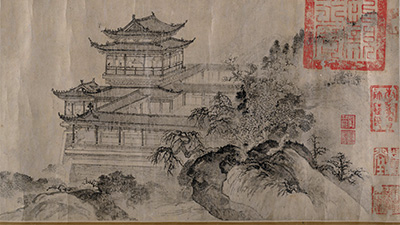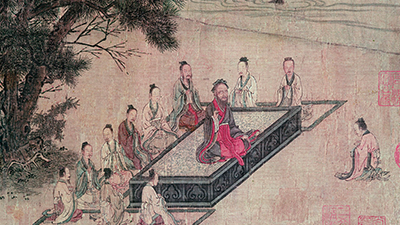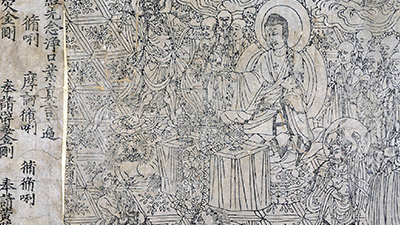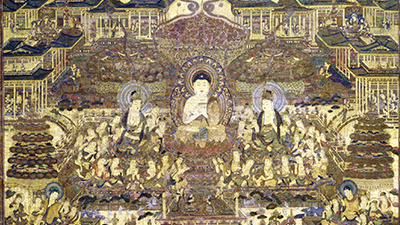Developments in East Asia
Teacher Resources
Driving Question: How did political and cultural developments in East Asia shape societies from c. 1200 to 1450 CE?
China alternated between periods of unity and disunity as its population and economy grew. Vietnam, Korea, and Japan were all shaped by China, though they also developed their own traditions.
Learning Objectives:
- Explain the systems of government employed by various Chinese dynasties and how they developed over time.
- Explain the effects of Chinese cultural traditions on East Asia over time.
- Explain the effects of innovation on the Chinese economy over time.
- Create and support arguments using historical evidence to communicate conclusions through individual or shared writing.
Vocab Terms:
- Buddhism
- bureaucracy
- Confucianism
- dynasty
- ritual
- tribute
Opener: Developments in East Asia
To teach this lesson step, refer to page 2 of Lesson 1.1 Teaching Guide.
It’s your opportunity to run a kingdom! How will you rule?
East Asia 1200–1450
To teach this lesson step, refer to page 2 of Lesson 1.1 Teaching Guide.
Looking to differentiate, modify or adapt this assignment? Check out our Differentiation Guide.
We all know that cultures change over time—but what are the driving forces of those changes? How can change in one aspect of culture spill over into other aspects? For East Asia during the Song Dynasty, Confucius certainly played a role.
-
Guiding Questions
-
Before you read
Preview the questions below, and then skim the article. Be sure to look at the section headings and any images.
While you read
Look for answers to these questions:
- How did the Chinese imperial map change in this period?
- What kind of values were emphasized in the Confucian writings that continued to be so important in China in this period?
- What were some of the important technological innovations during China’s Song dynasty?
- What were two of the main forms that Buddhism took in Japan?
- What was a shogun and what was a samurai?
After you read
Respond to the following questions:
- To what extent does this article explain the effects of Chinese cultural traditions on East Asia over time?
- How did China and its East Asian neighbors form a type of network in this period?
- What central ideas of Confucianism were significant in the way that the societies described in this article interacted and organized as communities?
Silk and the State in Song China
To teach this lesson step, refer to page 4 of Lesson 1.1 Teaching Guide.
This blog post, Engaging students with video, provides four steps in engaging students with videos.
From dresses to furnishings, and much in between, silk has proven to be a popular and sought-after material for centuries. During the Song Dynasty, it drove economic trade throughout Afro-Eurasia.
-
Guiding Questions
-
Before you watch
Preview the questions below, and then review the transcript.
While you watch
Look for answers to these questions:
- According to Francesca, where was silk produced during the Song Dynasty, and what were some of the most important export markets?
- According to Professor Xiaolin Duan, how did the economy work during the Song Dynasty? Who made silk, in particular?
- Other than clothing, what else was silk used for?
- According to Professor Duan, was the silk trade part of a wider Afro-Eurasian trading system? How?
- What does Pictures of Tilling and Weaving tell us about who did most of the work to produce silk?
- Does Professor Duan believe that there was an industrial revolution in China in this period? What evidence is there for it?
After you watch
Respond to the following questions:
- How did the production and trade of silk impact the government, economy, social interactions, and cultural development of China?
- Chinese silk is one example of a local commodity that was traded across extensive regional networks. The silk trade reshaped small communities, the Chinese state, and regional exchange networks across much of Asia. Can you think of anything that is, or once was, made in your community? Where does/did that good get distributed? Who produces, or produced, it? How does/did that industry affect your community, and how do you think that product has impacted other places?
Key Ideas
Closer: Developments in East Asia
To teach this lesson step, refer to page 5 of Lesson 1.1 Teaching Guide.
Did you make the right choice? Revisit your hypothetical kingdom from earlier in the lesson and consider the changes you’d make now that you’ve learned more.
Confucianism
To teach this lesson step, refer to page 5 of Lesson 1.1 Teaching Guide.
Confucian teaching had a massive effect on China c. the sixth century BCE. His message of self-improvement and his belief that people were fundamentally good resonated throughout East Asia.
-
Guiding Questions
-
Before you read
Preview the questions below, and then skim the article. Be sure to look at the section headings and any images.
While you read
Look for answers to these questions:
- What was the period like in which Confucius developed his ethic and shared it with others?
- How did Confucius argue that order could be restored?
- What were the principal ideas of the Confucian social order?
- What does the author mean when she says that it was a belief system that was political?
After you read
Respond to the following question: How do belief systems affect governance and social interactions?
Buddhism
To teach this lesson step, refer to page 6 of Lesson 1.1 Teaching Guide.
You have read about Confucian teachings, but his ideas were soon followed by another set of teachings you may have heard of—Buddhism. Although the two influenced one another, in many ways they were quite different.
-
Guiding Questions
-
Before you read
Preview the questions below, and then skim the article. Be sure to look at the section headings and any images.
While you read
Look for answers to these questions:
- What is the core belief of Buddhism, and how was this a challenge to Vedic beliefs?
- What are the Four Noble Truths?
- Who could follow the Eightfold Path easily, and why? How did Mahayana Buddhism change this?
- How did Buddhism change when it entered China?
After you read
Respond to the following questions:
- How do belief systems affect governance and social interactions?
- Buddhism adapted to local ideas in China and other parts of the world. Yet we generally argue that it remained Buddhism wherever it spread. Why do you think we consider it a single belief system, even if it was adapted and changed for local conditions?
Why Do Belief Systems Spread? How China Made Buddhism Its Own
To teach this lesson step, refer to page 7 of Lesson 1.1 Teaching Guide.
Have you ever thought about how many of the things you enjoy came from somewhere far away? How does culture spread? And how does it change once it has spread?
-
Guiding Questions
-
Before you read
Preview the questions below, and then skim the article. Be sure to look at the section headings and any images.
While you read
Look for answers to these questions:
- What are some reasons why Buddhism became popular in China?
- Who is the main person who brought Buddhism to China, according to the traditional story?
- What is one example of how Buddhism sinicized in China?
- Why and how did sinicization of Buddhism happen, according to Zenryū Tsukamoto?
- How did different systems of belief change people’s behaviors?
After you read
Respond to the following question: What does the sinicization of Buddhism tell us about the nature of a belief system as a community? As a network?






